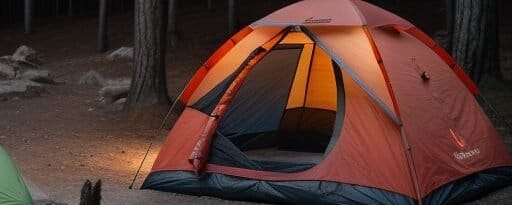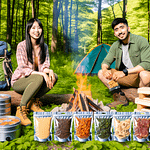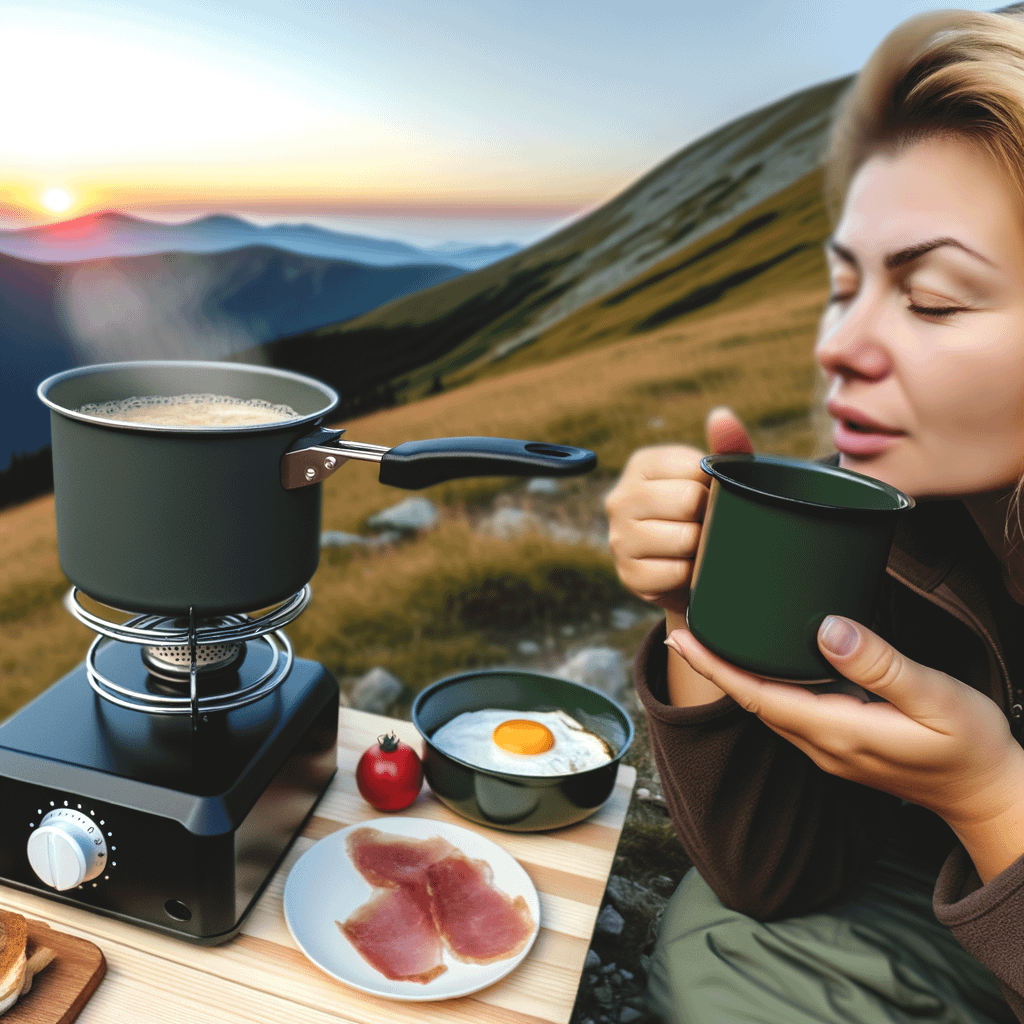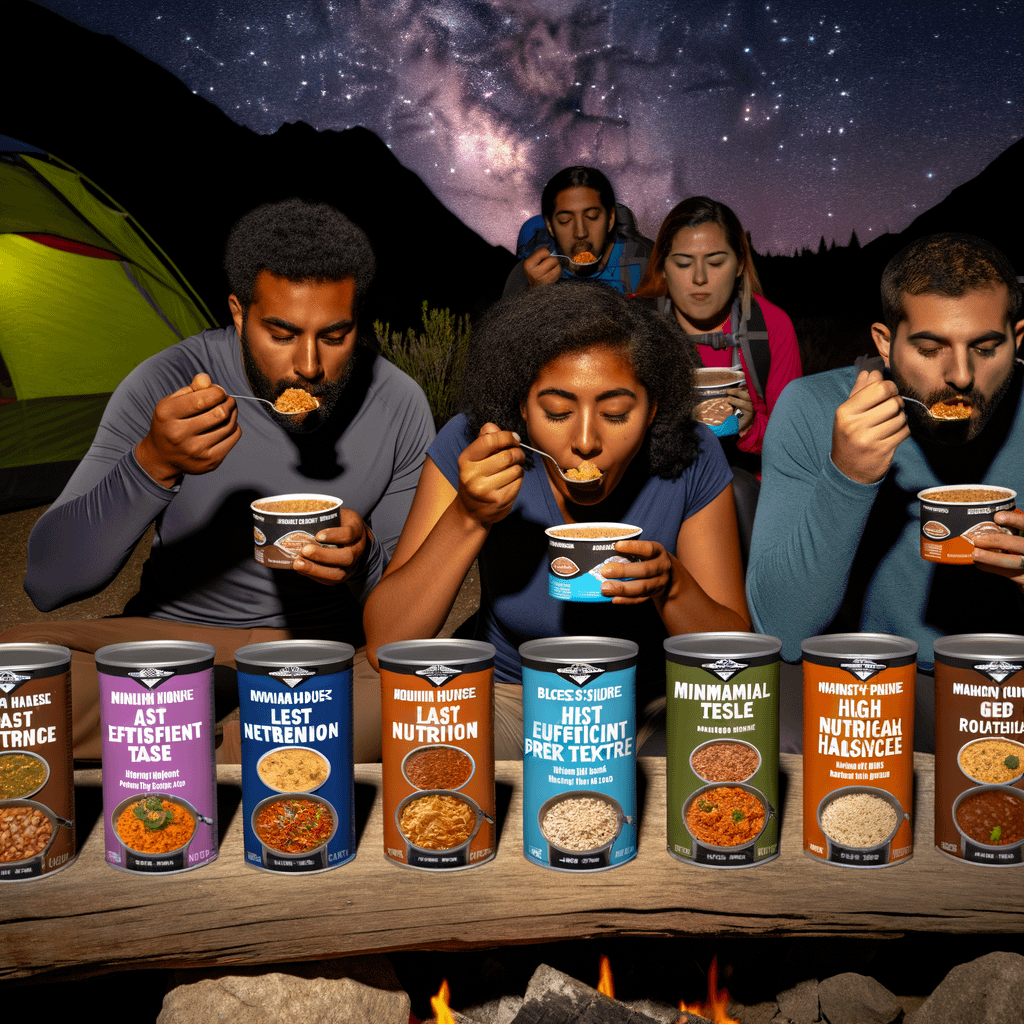No-Refrigeration Camping Meals for Weekend Adventures
Stay Fueled Off the Grid: No-Refrigeration Camping Meals for Weekend Adventures
Picture this: you’re deep in the wilderness, no cell signal, no fridge, and a hunger that only a hearty, satisfying meal can fix.
But guess what? You don’t need refrigeration to eat like a king while camping.
Whether you’re basecamping in the woods or backpacking a mountaintop, having no-refrigeration camping meals can be the difference between a great adventure and a hangry disaster.
Going off-grid doesn’t mean giving up on flavor or nutrition. With a little planning, you can enjoy delicious breakfasts, lunches, and dinners—no cooler required. In this guide, we’ll share essentials for choosing shelf-stable foods, sample meal ideas, and pro tips to help you pack smart and eat well without fear of spoilage.
Key Considerations for No-Refrigeration Camping Meals
Food Safety and Shelf-Stability
When refrigeration isn’t an option, your number one priority is food safety. Opt for ingredients that are shelf-stable and won’t spoil in warm conditions. Items sealed in vacuum packaging or canned are great choices. Always check expiration dates and avoid anything perishable.
Nutritional Balance and Energy-Boosting Meals
Your body burns more calories when hiking or staying active outdoors, so your meals should be packed with protein, healthy fats, and slow-digesting carbs. Include variety to ensure you’re getting essential nutrients to keep your energy up throughout your trip.
Weight and Packing Efficiency
You’ll want meals that are light and compact. Dehydrated or freeze-dried foods shine here, offering massive weight savings. Choose items that pack flat or can be crushed without spoiling, like tortillas and vacuum-sealed beans.
Duration and Climate Impact on Food Storage
The longer the trip or the hotter the environment, the more careful you must be about food storage. For weekend getaways, many shelf-stable foods will hold up fine in moderate temps. Extreme heat, however, may limit your options or require extra insulation to prevent spoilage.
Best No-Refrigeration Foods to Pack
Protein Sources
- Canned Meats: Tuna, chicken, and salmon provide protein with a long shelf life. Choose pull-tab cans or pouches for convenience.
- Jerky: Beef, turkey, and plant-based jerky are high in protein, flavor-packed, and require no prep.
- Shelf-Stable Tofu or Beans: Vacuum-sealed tofu or pre-cooked bean packets are compact and meal-worthy.
Carbohydrates
- Instant Rice or Couscous: Lightweight and quick to cook by just adding hot water.
- Tortillas, Crackers, Hard Breads: These are more durable than regular bread and less prone to mold.
- Shelf-Stable Pasta or Noodles: Choose ones that cook quickly or can be soaked like ramen noodles.
Fruits and Vegetables
- Dried and Freeze-Dried Fruits: Lightweight and naturally sweet, perfect for snacking or tossing into meals.
- Root Vegetables: Carrots, onions, and potatoes can handle a few days without refrigeration, especially in cool climates.
- Canned or Pouch-Packed Veggies: Great for adding color and nutrients to dinners.
Dairy Alternatives
- Powdered Milk or Shelf-Stable Milk Boxes: Add to coffee, oats, or sauces.
- Nutritional Yeast: A cheesy-tasting, protein-rich flavor burst for pastas and savory dishes.
- Hard Cheeses: Parmesan and aged cheeses last longer without refrigeration if stored properly.
Snacks and Extras
- Trail Mix and Nuts: Energy-dense, customizable, and crave-worthy on the trail.
- Energy Bars: A quick pick-me-up with carbs, protein, and fats in one bite.
- Nut Butters in Pouches: No mess, high in calories, and perfect for spreading or eating solo.
Sample Meal Ideas for Weekend Camping
Breakfast Options
- Instant Oats: Mix with dried fruit, powdered milk, and nuts for a nutritious start.
- Breakfast Burritos: Fill tortillas with canned beans, hot sauce, and seasoning packets—cold or heated.
- Powdered Eggs: If you have a camp stove, rehydrate powdered eggs and spice them with herbs or hot sauce.
Lunch Options
- Tuna or Chicken Salad Wraps: Mix with mustard or mayo packets and load into tortillas.
- Trail Mix Combo: Pair dried fruit with jerky and some hearty crackers for a no-cook lunch.
- Lentil Pouches with Hard Bread: Heat lentils over a stove or eat straight from the pouch with crusty bread.
Dinner Options
- Couscous and Beans: Couscous cooks fast with hot water; add vacuum-sealed beans and spices for a filling meal.
- Pasta and Dehydrated Veggies: One-pot meal magic. Cook together for a hearty, warming dish.
- Pre-Seasoned Rice and Canned Meat: Combine in a skillet with desired seasoning for an easy campfire dinner.
Snacks and Desserts
- Granola Bars and Jerky: Easy to grab and packed with calories.
- Chocolate or Marshmallows: Perfect end-of-day treats, and s’mores always win!
- Pudding Mixes: Combine with water and stir for an easy dessert.
Tips for Meal Planning Without Refrigeration
- Vacuum Seal and Airtight Storage: Keeps food fresh and prevents spoilage.
- Organize by Meal: Pre-pack each meal in labeled bags to stay organized and reduce stress.
- Prep Ingredients at Home: Chop veggies, pre-cook what you can, and measure spices in advance.
- Use Seasoning Packets: Instant flavor boosts without the bulk of full jars.
- Minimize Cleanup: One-pot or no-cook meals save time and require fewer supplies.
Cooking Methods in No-Refrigeration Settings
- Campfire Cooking: Classic and effective. Foil packets and skewers go a long way.
- Portable Stoves: Reliable and perfect for quick meals like ramen, oats, or rice dishes.
- Cold Soaking: Rehydrate noodles or grains using room temp water during your hike.
- One-Pot or No-Cook Meals: Simplify the process using only hot water or ready-to-eat ingredients.
Foods to Avoid Without Refrigeration
- Fresh Dairy and Eggs: Unless powdered or long-life, they spoil quickly without cold temps.
- Soft Cheeses and Uncured Meats: Risky for bacteria growth. Stick to shelf-stable varieties.
- Fresh-Cut Fruits and Veggies: These have short lifespans and are prone to spoilage.
- Items Requiring Refrigeration: Always follow safety suggestions to prevent food poisoning.
Packing and Storage Tips
- Keep Food Dry and Sealed: Moisture is the enemy of shelf-stable food. Use quality zip bags or dry sacks.
- Use Shaded, Cool Spots: Tuck supplies away from direct sun to help extend freshness.
- Store Food Away from Wildlife: Use bear canisters or hang food high in tree bags where necessary.
- Bring Backups: A few extra bars or pouches can be a trip-saver if things go wrong.
Conclusion
Not having a cooler doesn’t mean settling for lame meals in the wild. With smart choices, a little preparation, and proper storage, you’ll be amazed at just how satisfying no-refrigeration camping meals can be. From instant oats to pasta-packed dinners, the options are more diverse than ever.
Outdoor food expert Sandy Brown from Wilderness Nutrition Weekly says it best, “Shelf-stable foods have come a long way—you can eat better in the backcountry today than you could in your own kitchen a decade ago.”
So go ahead, experiment with ingredients, embrace planning, and hit the trail with confidence. Your taste buds (and your stomach) will thank you.
“`











